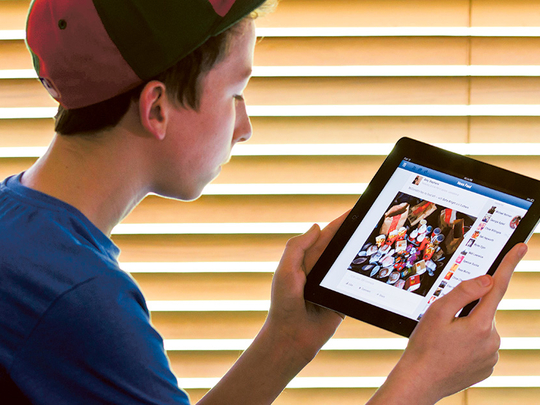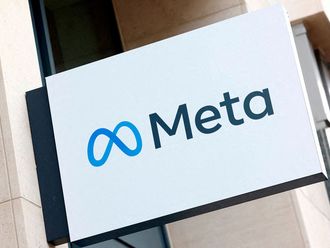
US television viewers have long yearned for the day they could get their favourite programmes streamed online without having to pay a huge cable bill each month. That day has arrived — and it’s confusing.
There’s the new Sling TV, starting at $20 (Dh73.40) a month, which offers channels such as ESPN and HGTV. Then there’s a CBS app for $6 a month. HBO is spinning out its offerings into a new streaming service. Add on top of all that older options such as Hulu, Netflix and Amazon Prime.
Those services are luring consumers to abandon traditional TV faster than ever. But after people “cut the cord” and drop cable, the new world is an ever-changing, mystifying array of choices. Enter one big company — Apple — that wants to clear up all the confusion.
If it succeeds, Apple could become the biggest gateway to online video — the new Comcast for the internet. And it has more cash on hand than any of its rivals to secure the most-desired shows.
Apple is in negotiations with major TV networks to bring a package of 25 channels to users of its devices for about $30 to $40 a month, as first reported by the Wall Street Journal and Re/Code. Apple’s TV package could be available as early as September and include Walt Disney’s ABC and ESPN, CBS and Fox. Add HBO Now, which will be available to Apple users for $15 a month starting in April, and the tech giant could have the most complete streaming offering of live popular TV shows and movies yet.
Potential savings
But there are also risks attached to Apple’s play. The tech firm is entering an already crowded field. Consumers who still want Netflix or other channels may end up paying close to what they used to pay their cable companies — wiping away the potential savings of cutting the cord. And in the end, viewers could be simply trading one kind of bundle for another one.
The future of TV may ultimately look a little like the past. Channels are being bundled into packages again, albeit smaller and cheaper for now.
The decline of traditional television has been years in the making, but it has dramatically accelerated in recent months. The cable business is at its weakest point in years.
Subscriptions have declined, and new federal rules protecting net neutrality limit the ability of companies such as Comcast to charge other firms more for faster streaming to viewers. Meanwhile, watching television through streaming services such as Netflix and Amazon has become mainstream — reaching 40 per cent of US homes, according to Nielsen.
All that pressure is causing the biggest networks to reconsider their allegiance to the cable industry, which for years has provided the channels the vast majority of their revenues through licensing fees.
“The writing was on the wall, and there has been a huge watershed moment over the last year with major networks quickly unbundling from cable companies,” said Brian White, an analyst at Cantor Fitzgerald.
That has ushered in a new wave of players in the TV landscape, from Facebook’s partnership with the NFL and ABC’s ‘World News Tonight’to Snapchat’s short videos from ESPN and Comedy Central. Apple, which has flirted for years with the idea of a TV service, has drawn great interest, with the potential to transform video entertainment in the same way it did with music through its iTunes store.
When Apple co-founder Steve Jobs introduced the iTunes store and iPod music player in 2001, the company upended the music industry by offering individual songs instead of entire albums. That led to a surge in digital music purchases and helped support the industry in its battle to combat music piracy.
A streaming television could be Apple’s next big act, giving the company entry into a new media field that could help it sell more hardware, such as the Apple TV device, iPads and iPhones. When Apple chief executive Tim Cook announced the HBO Now deal this month, he said, “Apple TV will reinvent the way that you watch television, and this is just the beginning.”
Transform the experience
Analysts think the company could also introduce a new TV product that would run the company’s operating system and feature its voice-recognition service, Siri. “Apple wants to transform the entire TV experience, and this would be one piece of the puzzle,” White said. “We expect a full-blown new Apple TV that pulls on the company’s entire ecosystem.”
The move into video entertainment is a direct shot at rivals Amazon and Google, companies that have invested billions of dollars into their streaming services.
“Apple is a strong brand and does things beautifully. Their number one goal is to sell devices, not to be a big player in video, and so they don’t expect to make a big profit in this service,” said Deana Myers, an analyst at SNL Kagan.
Yet the firm will have plenty of competition in the streaming world. Dish’s Sling TV launched in February with 17 channels, most notably ESPN. Sony began the roll-out of its streaming service for users of its PlayStation consoles, with dozens of programming networks for $49.99 a month.
“What all these services have in common is that they are all simply re-aggregations of traditional cable and broadcast networks,” Craig Moffett, an analyst at Moffett Nathanson Research, wrote in a report, saying that the true revolution in TV may still be a ways off. “The millennial cord cutter isn’t waiting around for just the right package of cable channels that only their parents watch.”












